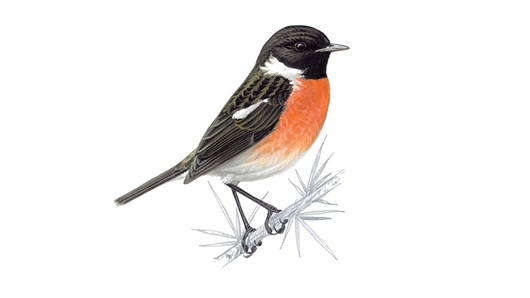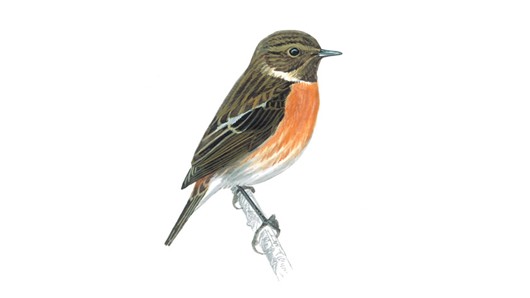A month or so ago, my family and I were walking to the beach at Holywell Bay in Cornwall and to get to the beach you have to walk through a naturally occuring wildlife area with tall reeds, sand dunes and other areas that birds love.
We had made it quite close to the beach itself when I happened to see a brightly coloured bird sat on a fence making a strange noise. At first I thought it was a Swallow due to the reddish colour on it, but the more I looked I realised it wasn’t a Swallow at all as the wings were completely different. The noise it was making was different as well and at the time I was completely stumped so made a mental note of trying to find out what it was at some point.
A few days later, I hadn’t had chance to look the bird up in my bird book, and we were watching the new series of Springwatch and to my surprise, they did a feature on the Stonechat. At which point, I recognised the bird and the noise it was making! No wonder I hadn’t recognised it, as I hadn’t even heard of that bird before but it was a lovely looking bird. Thanks Springwatch!! 😉
It turned out to be the male Stonechat that I saw, perched on the top of a fence, which is apparently a common place for them to be perched and calling from, along with tops of low bushes. Stonechats are Robin sized birds with the male and female having a striking difference in colouring. The males have black heads and white around the sides of their neck, with orange breasts and a browny back, whereas females do not have the black head and are often much browner with a slight orange tinge to their chests.
The strange noise that I heard coming from it was the sharp loud call that they have. It sounded like two stones being clicked together and this is actually correct and what they are called after as it is very distinctive!
These birds aren’t often seen in Winter but breed in the Spring in western and southern parts of the country. Their Latin name is Saxicola Torquata and they come from the Chat and Thrush family. They mainly eat insects, seeds and fruit such as blackberries and can be seen and heard mostly in heaths or coastal sites (hence why we saw it at the beach!).
This is a lovely little bird and I would really like to see and hear it again. We are going down to the same beach this weekend so I am hoping to catch a glimpse of it again then. I will report on my findings next week! 😉
Here is an image of a male Stonechat from the RSPB website.

Here is an image of a female Stonechat from the RSPB website.

